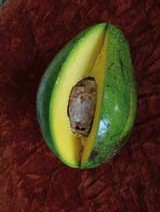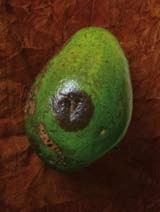Secret life of avocado anthracnose
Avocado originates in the New World with first cultivation thousands of years ago at high elevations in Mexico and Guatemala. Today’s single biggest producters remain in the New World (e.g. United States and Mexico) but avocado are also produced in commercial quantities throughout the tropics and sub tropics including India, South East Asia, West Africa, South Africa and the Middle East. Wherever grown, avocado is plagued by fungal pathogens infecting the leaves and fruit and in particular anthracnose caused by the fungus Colletotrichum gloeosporioides.
Avocado trees are commonly grown in conditions conducive to the rapid spread and development of fungal diseases including anthracnose, while at the same time being subject to intense weathering pressure on fungicide deposits applied for season long protection. The dense tree canopies displayed by some avocado varieties encourage disease development by prolonging high humidity levels and making control more difficult to achieve.
Thick waxy deposits which cover the surface of avocado leaves and fruit mean only those fungicides showing good particle-plant surface adhesion and high tenacity in the face of heavy rainfall stand any chance of control. Particulate fixed copper fungicides which are protectant in action provide the best all round option for the control of avocado anthracnose and other common diseases. Cuprous oxide is generally accepted as the most efficacious of the fixed copper fungicides, on a ‘gram for gram’ comparative basis, due to its higher proportion of active copper in the molecule.
Anthracnose of avocado has an extra dimension making disease control even more difficult to achieve. Infection of the fruit can take place at any time after fruit set but major disease and damage do not show up until after picking, during post-harvest storage, transit and marketing. This is due to the development of latent infections established weeks or months before, while the fruit was on the tree. As such, anthracnose of avocado has a ‘secret life’ lasting from fruit infection in the orchard until after harvesting. The only way to block this hidden development is to spray the trees with cuprous oxide by targeting the fruit and timing applications to cover the entire period of fruit susceptibility.
This is a preview of a full article published in International Pest Control – November/December 2013 issue.
View full article online
The full text of this article is available to subscribers of International Pest Control.
Subscribe for online access
Subscribe to International Pest Control for full online access to all articles in every issue since 2004.
Author: Dr Terry Mabbett – Technical Consultant – International Pest Control
Category: Agriculture













